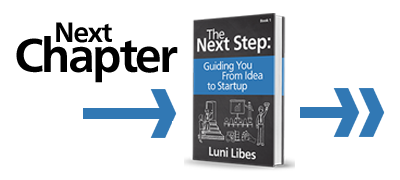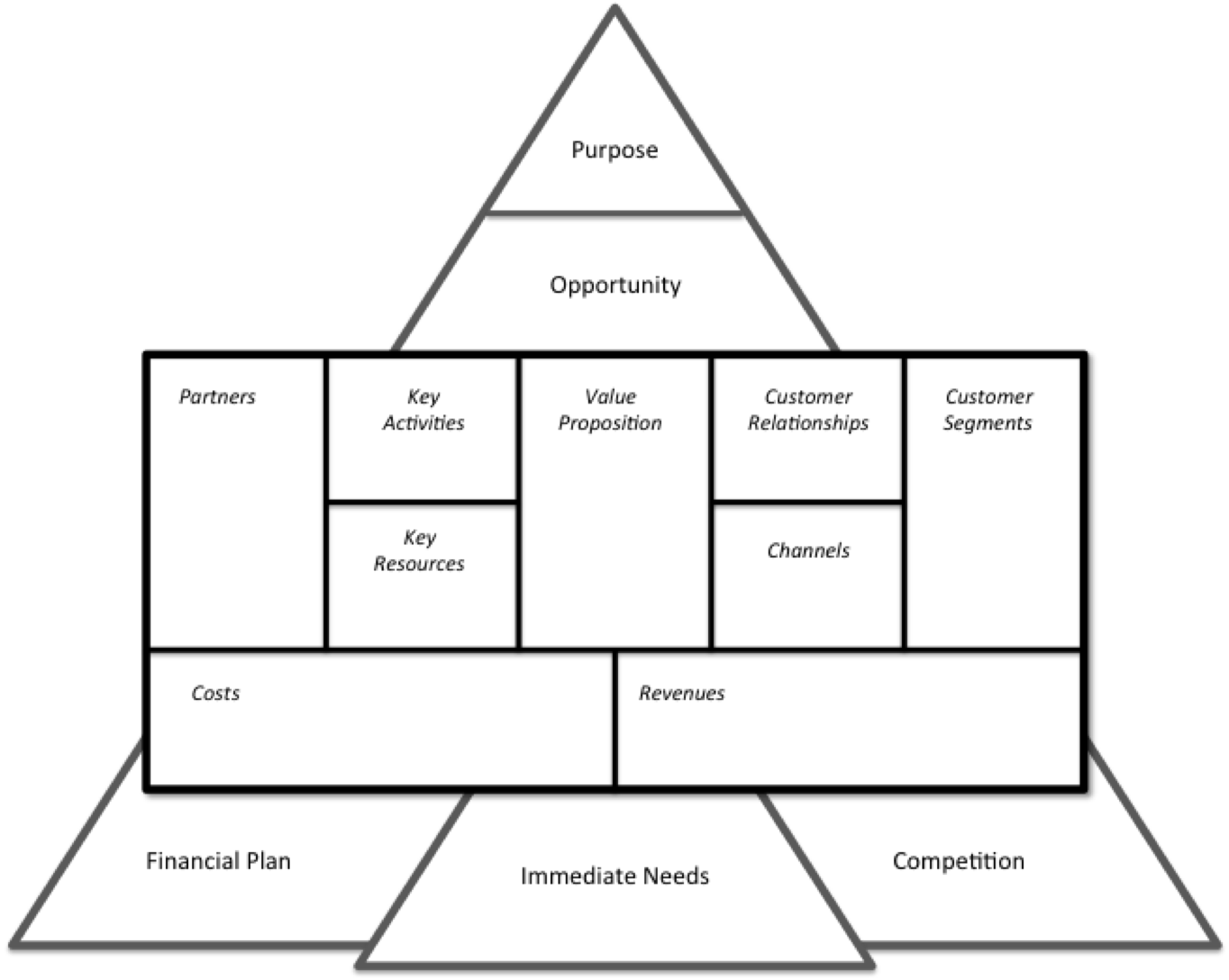Once upon a time… a long time ago… far, far away…
We have added five new boxes to the Business Model Canvas: Purpose, Opportunity, Financial Plan, Competition, and Immediate Needs. You now have all the components of a complete business plan. To present this plan, you walk through the Pyramid like so:
Let me show you the business plan for Company X, which is solving problem [Purpose]. This is a huge opportunity, affecting [Opportunity], who today spend [Opportunity] in ineffective/flawed solutions. Here is how it works [Canvas]. We offer [Value Proposition] to [Customer Segments] through [Channels], paying us [Revenues]. We use [Key Resources] and [Key Activities], along with [Partners]. Our financial projections show that this will be profitable by [Financial Plan], with a $E total investment. This approach is unique, compared to [Competition], and will stay ahead due to [Competition]. To get started, we need [Immediate Need], [Immediate Need], and [Immediate Need].
That may seem long and perhaps a little complicated, but it covers the same topics as an investor pitch (see Step 24).
In the Business Presentation Pyramid, Purpose can and should encompass more than just the problem being solved. It should include your own motivation for why you want to start this company, and that passion and enthusiasm must be conveyed through the whole pitch to make it great. The Purpose should be important not only to you and your team, but also to the audience you are presenting to. If not, then your passion will likely not be sufficient to get them interested in funding or helping you.
The Solution, Customers, and Market of the pitch deck are all found in the Value Proposition, Customer Segments, and Channels.
Opportunity is the same as described in Step 12. In the Pyramid, the details of the Opportunity come earlier than in the standard pitch. As long as you do not dwell on that topic for too long, the difference in timing is insignificant. During a presentation, most audiences want to get to the solution as quickly as possible.
Competition and Uniqueness (Step 13 and Step 14) in the pitch are both encompassed by the Competition box in the Pyramid.
Team (Step 16) is the one topic that has no single box in the Pyramid. However, nearly all startups require a team before launch, and that team is thus either a Key Resource, if it is already formed, or Immediate Need, if there are gaps. Or, in some cases, a key part of the Team is formed via partnerships, in which case team members show up in Partners.
The Financial Plan is a summary of the Financials you calculated in Step 20. This usually includes the amount of funding required, the amount of revenues over the next three to five years. The funding needed for the next steps that will be completed within the upcoming year, along with other non-financial needs, gets explained in Immediate Needs.
Pitch vs. Pyramid
As proud as I am for augmenting the Canvas to create the Pyramid (and thereby a complete business plan), I personally still use and advocate the traditional investment pitch outlined in Step 24 and the rest of the book, more than the Pyramid. At least when pitching to anyone outside the business.
The best uses of the Canvas and Pyramid are to help find Plan B and as internal documents to help the whole team understand how the business works. For that internal use, draw or print out a large paper Pyramid, cover it with sticky notes, and post it on the wall. When new information comes in, it is far easier to change a few sticky notes than to rewrite a written business plan or update the pitch deck.












